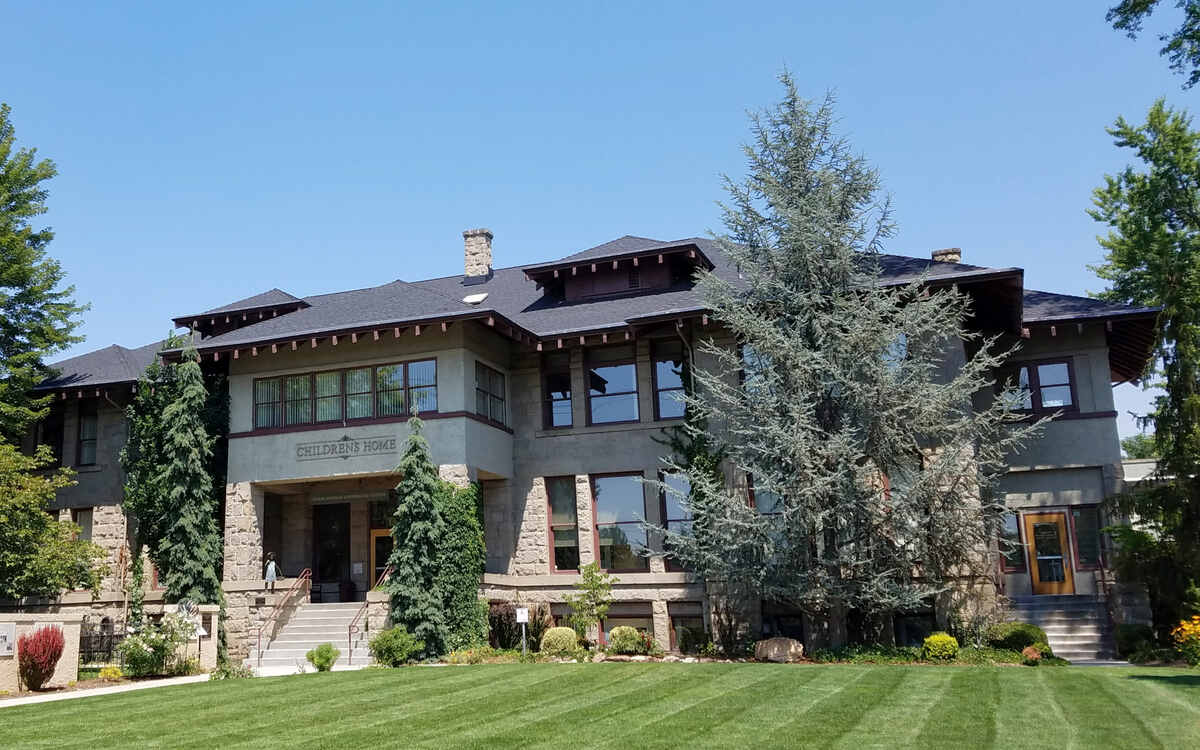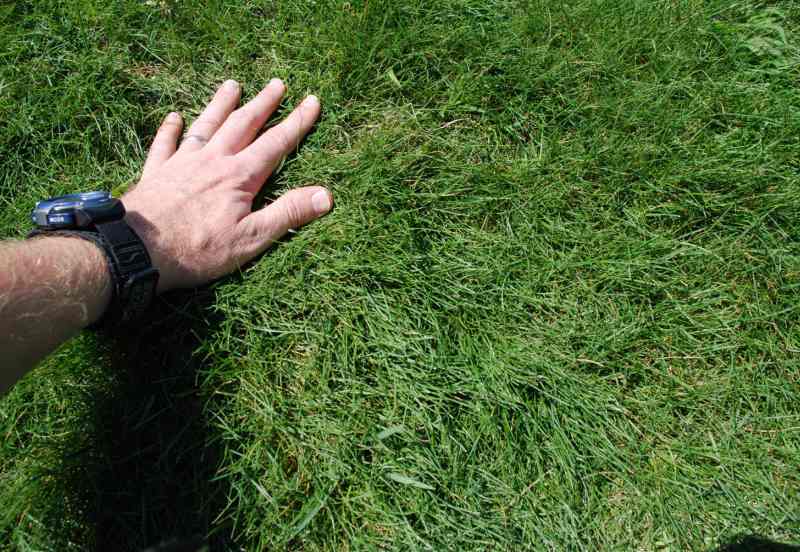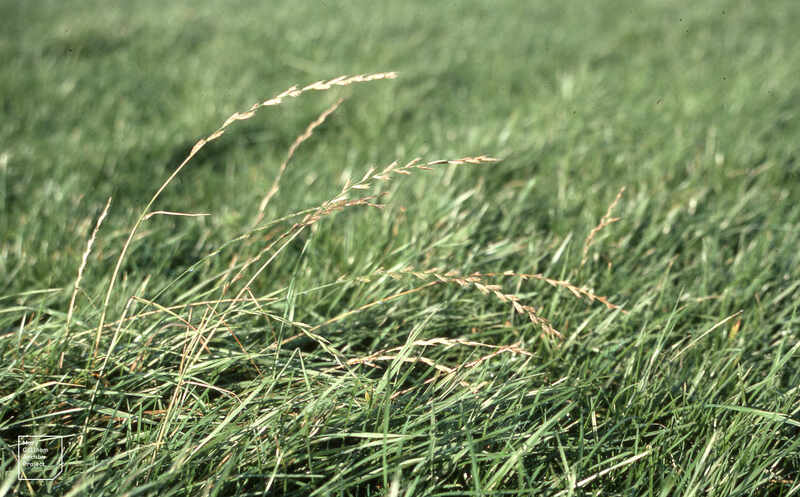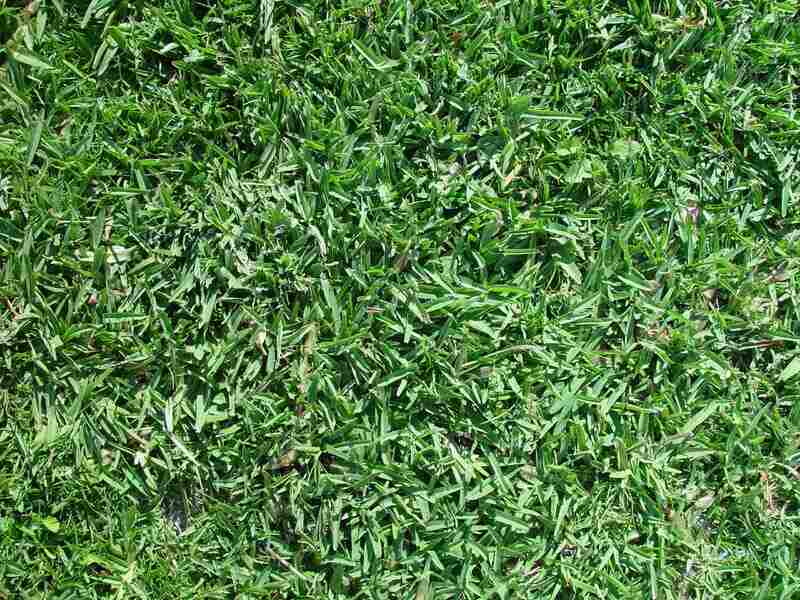
If you’re a resident of Idaho, you know there’s nothing quite like the natural beauty of this Gem State. With its stunning landscapes, mountains, and wildlife, it’s no wonder that Idahoans take such pride in their outdoor spaces. And when it comes to cultivating a lush and vibrant lawn, choosing the best grass seed for Idaho is crucial.
With a bit of knowledge and the right grass type that is well-suited to Idaho’s soil and climate, you can create a beautiful lawn that enhances your property’s beauty and supports the local ecosystem. So grab your gardening gloves, and let’s get started!
If you’re busy enjoying Idaho’s rugged beauty, check out our quick decision guide on how to choose the best grass seed for Idaho.
Cool-Season Grasses
Kentucky Bluegrass

Photo Credit: Matt Lavin / Flickr / CC BY-SA 2.0
Kentucky Bluegrass is a popular grass variety in Idaho and for good reason. As a cool-season turfgrass, it is well adapted to Idaho’s climate, particularly in the northern and central parts of the state. This grass variety can tolerate Idaho’s cold winters and freezing temperatures, making it an ideal choice for homeowners looking for a durable and attractive lawn.
Kentucky Bluegrass is also a sun-loving grass, making it perfect for areas with plenty of sunlight. On the downside, Kentucky Bluegrass does not tolerate heat very well and will require more frequent watering and fertilization than other types of grass.
Classification: Cool-season grass
Spreads by: Rhizomes
Shade tolerance: Low
Drought tolerance: Moderate
Foot traffic tolerance: Moderate
Maintenance needs: Moderate mowing frequency and high fertilization needs.
Mowing height: Set mowing height between 2.5 and 3.5 inches.
Potential for disease: Moderate to high; prone to several diseases, such as dollar spot, leaf spot, necrotic ring spot, summer patch, and stripe smut.
Soil pH: 6-7.5
Soil type: Performs best in well-drained, heavy soils with high fertility.
Other notes: In southern Idaho, it is recommended to mix Kentucky Bluegrass with other cool-season grasses to reduce the risk of insect and disease problems.
Grass Seed Options:
– Jonathan Green (11970) Blue Panther Kentucky Bluegrass Grass Seed (3 lbs.)
– SeedRanch Midnight Kentucky Bluegrass Seed (5 lbs.)
Tall Fescue

Aaron J. Patton, Ph.D. / Turfgrass Extension Specialist at Purdue University
Tall fescue has a medium to deep green color and is another cool-season grass adapted to various soil conditions, including Idaho’s. One of the key benefits of this grass variety is its deep root system, which allows it to tolerate heat and drought much better than other cool-season grasses.
Conversely, tall fescue typically has a coarser texture than Kentucky bluegrass, which might affect its appearance. Still, newer turf-type varieties with finer leaves are also available now. In addition, this fast-growing grass needs frequent mowing to maintain its height and appearance but won’t develop thatch (so cross this off of your to-do list!).
Classification: Cool-season grass
Spreads by: Produces short rhizomes but has a bunch-type growth habit
Shade tolerance: Moderate
Drought tolerance: Moderate to High
Foot traffic tolerance: Moderate
Maintenance needs: Frequent mowing. Does not produce significant thatch.
Mowing height: Set mowing height to 2 inches when grass reaches 3 inches tall.
Potential for disease: Tolerant of most diseases when properly maintained.
Soil pH: 5.5-6.5
Soil type: Adapted to a wide range of soil conditions, but prefers fertile clay soils with good drainage.
Other notes: This grass can become thin when grown in high-elevation areas.
Grass Seed Options:
– Triple-Play Tall Fescue Grass Seed Blend (5000 sq ft)
– Eretz Kentucky 31 K31 Tall Fescue Grass Seed (choose your size)
– Pennington The Rebels Tall Fescue Grass Seed Mix (7 lb.)
Fine Fescues

Aaron J. Patton, Ph.D. / Turfgrass Extension Specialist at Purdue University
Fine fescues are an excellent option for Idahoans looking for a low-maintenance, attractive lawn. These grass varieties are known for their fine, delicate blades, which can give your lawn a dense and beautiful appearance.
Fine fescues are also the most shade-tolerant grass option in Idaho, making them a great choice for lawns with many trees or hardscape elements like pergolas and awnings. On the flip side, they don’t tolerate heat very well and are not as resilient as other grass types, so they are not ideal for areas with high traffic.
In Idaho, fine fescues are commonly used in seed mixtures with Kentucky bluegrass and perennial ryegrass for better shade tolerance.
Classification: Cool-season grass
Spreads by: Creeping red fescue spreads by rhizomes, while other fine fescues are bunch-type grasses, such as Chewings, hard, and sheep fescues.
Shade tolerance: Moderate to High, depending on species
Drought tolerance: Moderate to High, depending on species
Foot traffic tolerance: Low to Moderate, depending on species
Maintenance needs: Low fertilizer and mowing needs
Mowing height: Set mowing height between 2.5 and 4 inches, depending on species.
Potential for disease: Moderate. Common diseases include red thread, leaf spot, dollar spot, summer patch, and powdery mildew.
Soil pH: 6-6.5
Soil type: Will not perform well in wet soil conditions. Prefers drier soils and tolerates a wide range of soil types and fertility.
Other notes: Fine fescue varieties include hard fescue, chewings fescue, sheep fescue, and creeping red fescue.
Grass Seed Options:
– Outsidepride Legacy Fine Fescue Grass Seed (5 lbs.)
– Eretz Creeping Red Fine Fescue Seed (choose your size)
– Outsidepride Creeping Red Fine Fescue Grass Seed (25 lbs.)
– Outsidepride Hard Fine Fescue Grass Seed (10 lbs.)
Perennial Ryegrass

Photo Credit: Dr Mary Gillham Archive Project / Flickr / CC BY 2.0
Perennial ryegrass is commonly used in seed mixtures with Kentucky Bluegrass. This grass germinates quickly, providing shade and protection for the slower-growing bluegrass. Additionally, this fast germination rate makes it difficult for weed seeds to find enough space and sunlight to germinate and grow, helping with weed prevention.
However, perennial ryegrass is not as cold hardy as Kentucky bluegrass, so it may not be as suitable for areas with harsh winter conditions. Additionally, it is less drought-tolerant than some other grass varieties and will require frequent watering, especially in the eastern, drier parts of the state.
Classification: Cool-season grass
Spreads by: Has a bunch-type growth habit
Shade tolerance: Low
Drought tolerance: Low
Foot traffic tolerance: High
Maintenance needs: Moderate mowing and fertilization requirements. Thatch is not significant.
Mowing height: Set mowing height to 1.5 to 2.5 inches
Potential for disease: High. Common diseases include gray leaf spot, red thread, and leaf spot/melting-out.
Soil pH: Can grow in soils with a pH between 5 and 8, but prefers between 6 and 7.
Soil type: Prefers good drainage and fertility, but can tolerate some poor drainage.
Other notes: The University of Idaho recommends using less than 20% of perennial ryegrass for sun/shade seed mixes.
Grass Seed Options:
– Outsidepride Perennial Ryegrass Seed (5 lbs.)
– Eretz ProTurf Perennial Ryegrass Fine Lawn Seed (choose your size)
Warm-Season Grass
Buffalograss

Photo Credit: Pixnio
Buffalograss is a warm-season grass well-suited to Idaho’s climate and soil conditions, primarily due to its ability to withstand cold temperatures. Unlike cool-season grasses, buffalograss is naturally more resistant to heat and drought, making it a great choice for areas with hot, dry summers.
One of the main benefits of buffalograss is its low-maintenance requirements. This grass requires very little mowing and watering, saving you time and money in the long run. However, it has a short growing season and will look brown from mid-September to mid-May, which may not be ideal for homeowners who want a lush, green lawn year-round.
Classification: Warm-season grass
Spreads by: Stolons
Shade tolerance: Low
Drought tolerance: High
Foot traffic tolerance: Low
Maintenance needs: Low fertilizer and mowing needs. Requires weed control.
Mowing height: Set the mowing height between 2 and 3 inches.
Potential for disease: Good tolerance against diseases and insects
Soil pH: 6.5-7.5
Soil type: Native clay soils, not sandy soils
Other notes: This grass is only drought resistant once established. New seedlings need to be watered frequently.
Grass Seed Options:
– Everwilde Farms Buffalograss Seeds (1 lb. of seeds)
– Buffalograss seed (primed) (5-lb. bag)
What is the Best Grass Seed for Boise, Idaho?
The best grass seeds for Boise, Idaho, are tall fescue and fine fescue. Boise’s semi-arid climate, with its hot summers and very little rainfall, can make maintaining a healthy and attractive lawn challenging.
While Kentucky Bluegrass is a popular grass variety in other parts of Idaho, it may not be the best choice for Boise due to its high water requirements and low heat tolerance.
How to Choose the Best Grass Seead for Idaho
Just because a grass seed is highly recommended for lawns in the state, it doesn’t mean it will be a perfect fit for you. As a homeowner, it’s essential to consider some factors before deciding on a grass type:
Maintenance Needs
The first factor to consider is your personal preference for maintenance. While some grass types require minimal watering, mowing, and fertilizing, others need much more upkeep.
High-maintenance grasses: Kentucky bluegrass
Moderate-maintenance grasses: Perennial ryegrass, tall fescue
Low-maintenance grasses: Fine fescues, buffalograss
Drought Tolerance
Drought tolerance is an essential factor when selecting a grass type for your Idaho lawn, especially in the eastern part of the state, which gets much less rainfall. Choosing a grass variety well-suited to arid conditions can help ensure that your lawn remains healthy even during the dry summer months.
High drought tolerance: Fine fescue, buffalograss
Moderate drought tolerance: Kentucky bluegrass, tall fescue
Low drought tolerance: Perennial ryegrass
Shade Tolerance
The position of trees and hardscapes can significantly impact the amount of shade on your lawn, which in turn can affect the growth and health of your grass. Some grass types can thrive even in shady areas, while others need full sun. Choose the one best suited for your yard’s conditions.
High shade tolerance: Fine fescues
Moderate shade tolerance: Tall fescue
Low shade tolerance: Kentucky bluegrass, perennial ryegrass, buffalograss
Bring in the Professionals
Selecting the right grass seed for your new lawn requires careful consideration of various factors, including climate, maintenance requirements, and shade level. Still not sure which grass to choose? Call for an Idaho lawn care pro near you! We have trusted professionals in Boise and many more cities across the state.
Main Image Credit: Tamanoeconomico / Wikimedia Commons / CC BY-SA 4.0
LawnStarter participates in the Amazon Services LLC Associates Program, an affiliate advertising program. LawnStarter may earn revenue from products promoted in this article.